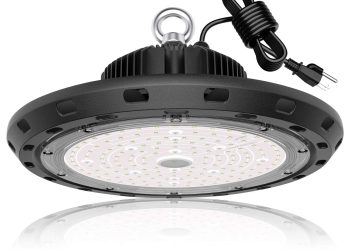In today’s fast-paced digital landscape, SaaS (Software as a Service) products have revolutionized the way businesses operate and deliver value to their customers. Developing a successful SaaS product requires careful planning, strategic execution, and continuous improvement. In this article, we will explore the key steps to achieve successful SaaS product development, providing insights and guidance for businesses aiming to create impactful SaaS solutions.
Ideation and Conceptualization
To kickstart the SaaS product development journey, it is crucial to begin with a solid foundation of ideas and concepts. This involves understanding market needs, identifying target audiences, and brainstorming innovative solutions. By researching customer pain points and gaps in the market, businesses can generate ideas that address specific challenges or provide unique value propositions. Collaborating with stakeholders, including potential users and subject matter experts, can contribute to refining the concept and ensuring its viability.
Market Research and Validation
Once a product concept is established, conducting thorough market research becomes essential. This step involves analyzing competitors, assessing market demand, and validating the product idea through customer surveys, interviews, and focus groups. Gathering insights into user preferences, behaviors, and expectations enables businesses to refine their product concept and align it with market requirements. Validating the product idea helps reduce the risk of developing a product that lacks market appeal or fails to meet customer needs.
Product Planning and Roadmap
With a validated product concept, the next step is to create a comprehensive product plan and roadmap. This involves defining the features and functionalities of the SaaS product based on customer needs and market research findings. Prioritizing features based on their value and feasibility ensures that the development process remains focused and efficient. A well-defined roadmap outlines the key milestones, timelines, and dependencies, providing a clear direction for the development team and stakeholders.
Agile Development Methodology
Adopting an agile development methodology is crucial for successful SaaS product development. Agile methodologies, such as Scrum or Kanban, promote flexibility, collaboration, and iterative progress. Breaking down the development process into sprints and tasks allows for continuous improvement and adaptation based on user feedback and evolving market requirements. Regularly reviewing and adjusting the development plan helps teams stay responsive to changing needs, ensuring efficient development cycles and timely delivery.
User Experience (UX) Design
User experience design plays a pivotal role in SaaS product development. It focuses on creating intuitive, user-friendly interfaces that enhance usability and satisfaction. Conducting user research helps understand user preferences, behaviors, and pain points, which can inform the design decisions. Developing wireframes and prototypes allows for visualizing the product’s interface and functionality before moving into full-scale development. Iteratively refining the design based on user feedback and conducting usability testing ensures a seamless and engaging user experience.
Development and Testing
The development and testing phase is where the SaaS product takes shape. Front-end and back-end development teams work collaboratively to implement the features and functionalities defined in the product plan. Following best practices and employing robust security measures are crucial to protect user data and maintain the integrity of the product. Thorough testing, including functional, performance, and security testing, helps identify and resolve any bugs or issues before the product is released to users. Regular testing and quality assurance measures are essential throughout the development process.
Deployment and Launch
As product development nears completion, businesses must prepare for the deployment and launch phase. This involves ensuring the product is properly deployed and accessible to users, setting up appropriate hosting infrastructure, and configuring necessary integrations. Effective deployment strategies and careful coordination between development and operations teams are essential for a smooth launch. Additionally, creating a marketing and promotional plan, including pre-launch and post-launch activities, helps generate buzz and attract potential users to the SaaS product.
Continuous Improvement and Updates
SaaS product development is an ongoing process that doesn’t end with the launch. Continuous improvement is key to maintaining a competitive edge and meeting evolving customer needs. Collecting user feedback, monitoring product performance, and analyzing user behavior help identify areas for improvement. Iteratively enhancing the product based on user insights and market trends ensures its relevance and effectiveness. Providing regular updates, bug fixes, and feature enhancements is essential to keep users engaged and satisfied with the SaaS product.
Customer Support and Maintenance
Offering excellent customer support and maintenance services is crucial for the long-term success of a SaaS product. Establishing efficient customer support channels and processes allows users to seek assistance when needed, ensuring their satisfaction and loyalty. Providing ongoing maintenance, timely bug fixes, and security updates helps maintain the product’s performance and security. Proactive communication and engagement with customers foster a strong relationship and encourage feedback, which contributes to continuous improvement and future product iterations.
Conclusion
Successful SaaS product development requires careful planning, market research, and adherence to key steps. By following a systematic approach, from ideation and market validation to agile development, user experience design, and continuous improvement, businesses can create impactful SaaS products that meet market demands and deliver value to customers. Partnering with a reliable SaaS product development company can provide the expertise and resources needed to navigate these key steps successfully. Embracing a customer-centric mindset and focusing on quality throughout the development journey will position businesses for long-term success in the dynamic world of SaaS product development.







